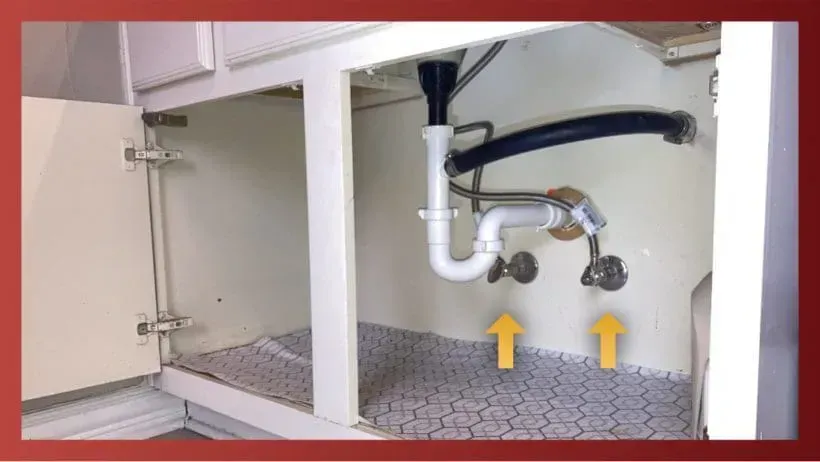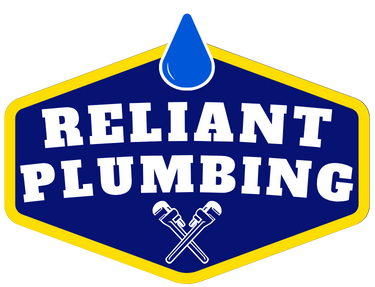
🚿 Emergency Shut-Off Valves: Why You Need Them Under Every Sink
A small valve with a big purpose—protecting your home from serious water damage when seconds count.

Introduction
When a pipe bursts or a faucet won’t stop leaking, every second matters. That’s where emergency shut-off valves come in. These small, often-overlooked components sit quietly beneath your sinks—but they’re your first line of defense against major water damage.
If you own a home in Cambridge, ON, and you don’t know where your shut-off valves are (or if they even work), this article is for you. Learn what they do, why they matter, and when they need replacement.
1. What Is an Emergency Shut-Off Valve?
Emergency shut-off valves—also called angle stops or supply stops—are small valves located under your sinks and toilets. They allow you to cut off the water to a specific fixture without shutting off water to the entire house.
You’ll typically find them:
- Under kitchen sinks (for hot and cold water)
- Below bathroom vanities
- Behind toilets
- Near laundry machines
2. Why They're So Important in a Plumbing Emergency ⚠️
Imagine your bathroom faucet suddenly springs a leak at 10 PM. Do you:
- Shut off your entire home’s main water supply and wait until morning?
- Or turn the small valve under the sink and avoid a flood?
Without functioning shut-off valves, you're forced to shut off all water—interrupting showers, laundry, and other tasks.
Benefits of emergency shut-off valves:
- Prevent flooding from leaks or burst hoses
- Allow for easy repairs or fixture swaps
- Avoid shutting off your whole house’s water
- Reduce potential water damage and cleanup costs
3. Signs Your Shut-Off Valves Need Attention
Not all valves work as intended—especially older ones. Here are red flags to watch for:
- Valve won’t fully close
- Valve is rusty, stuck, or corroded
- Leaks at the connection or handle
- Valve hasn’t been tested or used in years
Pro Tip: You should test your shut-off valves every 6–12 months. Turn them off and on to ensure they still operate properly.
4. Types of Shut-Off Valves Under Sinks
There are a few common types used in residential plumbing:
🔄 Compression Valve
Uses a nut to compress a washer and stop flow. Can wear out over time.
🔧 Ball Valve
Offers full shut-off with a quarter turn. Durable and ideal for emergency shut-off.
🛑 Gate Valve
Common in older homes. Can corrode internally and may not close properly.
Newer homes or renovations often use quarter-turn ball valves, which are more reliable in emergencies.
5. When to Replace Shut-Off Valves 🔄
Shut-off valves don’t last forever—especially in older Cambridge homes. Here’s when to consider replacing them:
- You’re doing a sink or faucet upgrade
- The valve is leaking or corroded
- It won’t fully open or close
- You notice visible rust or mineral buildup
Many plumbers recommend replacing old valves anytime you replace the faucet or fixture above it.
6. DIY vs. Professional Replacement
Replacing a shut-off valve may look simple, but it involves:
- Shutting off your home’s main water
- Cutting or tightening plumbing connections
- Ensuring proper seals and thread tape
If you're not comfortable handling plumbing connections—or if your valves are soldered—it’s safer to call a licensed plumber. Incorrect installs can cause leaks or water damage down the road.
Final Thoughts
Emergency shut-off valves under your sinks may not be flashy, but they’re essential for a safe, well-functioning home. They give you fast control during a plumbing emergency, simplify repairs, and help prevent costly floods.
If your shut-off valves are old, rusty, or hard to operate, don’t wait for a leak to find out they’ve failed. Replacing or upgrading them is a small investment that pays off in peace of mind.
